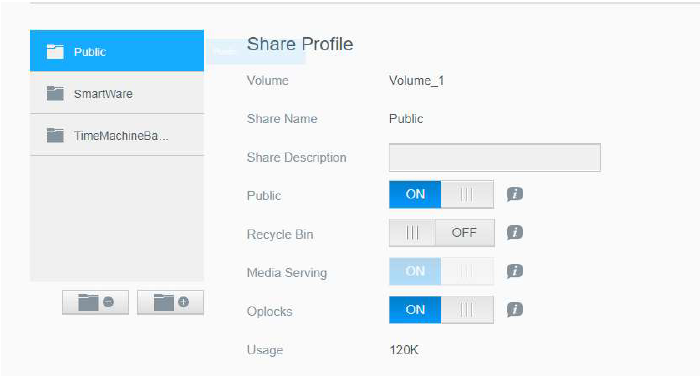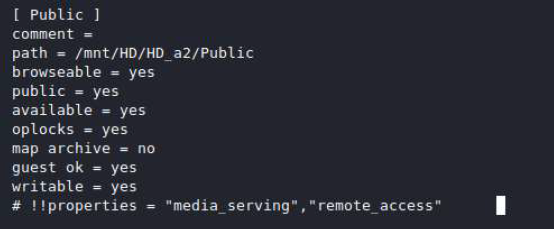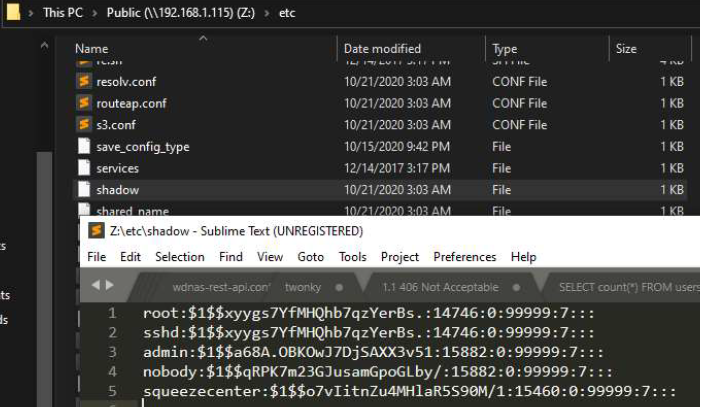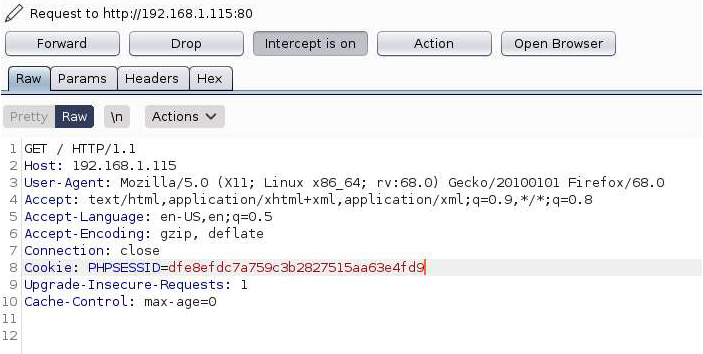CVE-2021–3310 Western Digital MyCloud PR4100 Link Resolution Information Disclosure Vulnerability
Pwn2own is something like the “academy awards” for exploits and like any good actor… or in this case hacker I dreamt of my chance on the red carpet… or something like that. I had previously made an attempt at gaining code execution for Pwn2own Miami and ended up finding some of the bugs that were used in the incite team’s exploit of the Rockwell Studio 5000 logic designer. However, I couldn’t follow the path to full RCE. The incite team’s use or abuse of XXE was pretty mind-bending!
So I patiently waited for the next event… finally, Pwn2own Tokyo 2020 was announced. I wanted another shot at the event so when the targets were released I wanted to focus on something practical and possible for me to exploit. I picked the Western Digital My Cloud Pro Series PR4100 device because I needed a NAS for my home network, it had lots of storage and was x86 based. Therefore if I needed to work on any binary exploitation I wouldn’t be completely lost.
Now that my target was chosen I needed to find a way to gain root access to the device.
NAS devices represent interesting targets because of the data that they hold, backups, photos, and other sensitive information. A brief review of previous CVEs affecting the Western Digital My Cloud lineup highlighted the fact that this device is already a target for security researchers and exploitation, as such, some of the low-hanging fruit had already been picked off. This included previous unauthenticated RCE vulnerabilities. Nevertheless, let’s dive into the vulnerabilities that were chained together to achieve root-level access to the device.
The Vulnerabilities
AFP and SMB Default share permissions
Out of the box, the My Cloud ships with AFP and SMB file sharing enabled and 3 public file shares enabled. The web configuration states that public shares are only enabled when one or more accounts are created, however by default there is always an administrator account, so these shares are always enabled.

Diving into the share configuration we can see that for SMB guest access is enabled under the “nobody” account, thus requiring no authentication to access the shares. Since we have access to the share as “nobody”, we can read files, and create new files, provided the path gives us those permissions. We already have limited read and write primitives, awesome!

Similarly, in the AFP configuration we can see that the “nobody” user is a valid user with permissions to the Public share Figure 3 Netatalk / AFP configuration.

Accessing the default folders doesn’t do us much good unless we can navigate the rest of the filesystem or store a web shell there. Digging deeper in the SMB configuration we find that following symlinks and wide links is enabled.

We now have a vector by which to expose the rest of the filesystem. Let’s create some arbitrary symlinks to follow. After creating both symlinks to /etc/ and /temp/ we see something interesting. Apparently, the security configuration for /etc/shadow is overly permissive, and we can read the /etc/shadow file as a non-root user. #winning!

We can confirm this is the case by listing the permissions on the filesystem

Typically, shadow files are readable only by the root user, with the permissions -rw-r — — such as in the example below

While its certainly impactful to gain access to a shadow file, we’d have to spend quite a bit of time trying to crack the password, even then it may not be successful. That’s not enough for us to get interactive access immediately (which is what pwn2own requires). We need to find a way to gain direct access to an admin session…
While navigating the /tmp directory via a symlink we can spot that the apache/php session path is thedefault “” which evaluates to the /tmp directory on Linux systems. We can validate that by checking the PHP configuration.

Now we have a way to access the PHP session files, however, we can see that the file is owned by root and is ironically more secure than the /etc/shadow file. However, since the naming convention for the session file is still at its default and the sessions are not obfuscated in any way, the only important value is the filename which we can still read via our read primitive!

Once we have leaked a valid session ID we can submit that to the website and see if we can get logged in.

After sending our request we find that the admin user is not logged in! We failed one final security check and that was for an XSRF token which the server generates after successful authentication. Since we aren’t authenticating the server doesn’t provide us with the token. Since most of the previous exploit attempts were directly against the web application several security checks have been implemented, the majority of PHP files on the webserver load login_checker.php which runs several security checks. Here the code for csrf_token_check() is displayed.

Reading the code, it appears that the check makes sure that WD-CSRF-TOKEN and X-CSRF-Token exist and are not empty. Finally, the check passes if $token_in_cookie equals token_in_header. This means all we must do is provide an arbitrary value and we can bypass the CSRF check!
The final attack then is to submit a request to the webserver to enable SSH with an arbitrary password. The URI at which we can do that is /cgi-bin/system_mgr.cgi


The Exploit
The techniques used in this exploit are intended to chain together several logical bugs with the PHP CSRF check bypass. The steps involved in this exploit are as follows.
1. Mount an AFP share on the target NAS’ Public directory
2. Mount an SMB share on the target NAS’ Public directory
3. Using the local AFP share create a symlink to /tmp in the directory
4. Navigate to the /public/tmp directory on the SMB share
5. Read a session ID value from the share (if an admins session token is still valid)
6. Use the session id in a web request to system_mgr.cgi to enable SSH access to the device with an arbitrary root password.
7. Leverage the CSRF bypass in the web request and use an arbitrary X-CSRF-Token and WD-CSRFToken values
The final result
What’s the shelf life of an 0-day? Vulnerabilities are inherently a race condition between researchers and vendors, where bugs may get squashed intentionally, or unintentionally due to vendor patches, or it being discovered and disclosed by another researcher. In the case of this bug, the vendor released a patch 2 weeks before the competition, and the changes to the PHP code, validation of sessions, as well as updating PHP version squashed my exploit chain. I was still able to leverage the NFS / SMB bug to trigger a DOS condition due to a binary reading arbitrary files from an untrusted path. However, my RCE chain was gone and I couldn’t find another one in time for the event. Upon disclosing all of the details to ZDI they still decided to acquire the research even without RCE on the newest full release version of MyCloud OS. During the event, I enjoyed watching all of the other researchers submit their exploit attempts and I enjoyed the process of working with ZDI to get to acquisition and ultimately disclosure of the bugs. I’ll be back for a future pwn2own!
Finally, check out more blogs at https://redblue42.code42.com and if you’d like to check out the exploit, my code is available on github.